Another breakthrough in the field of robotics: The third-generation cheetah robot newly developed by MIT does not rely on vision or any external sensors, but relies on control algorithms. Regain balance quickly when suddenly pushed or yanked. Would you like to come with such a mechanical dog?
Speaking of cheetah robots, you might think of this from Boston Dynamics:
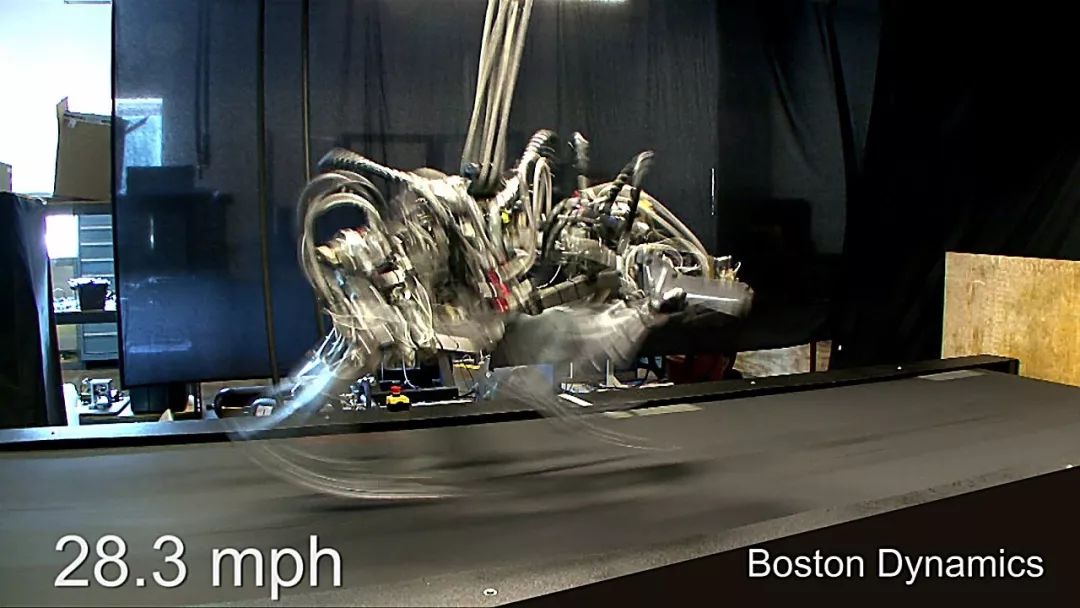
Yes, known as the fastest robot, the Boston-powered Cheetah runs and you can't even see its legs.
However, there is a cheetah robot that is equally or even better. That is MIT's cheetah robot.
The newly developed third-generation Cheetah robot (Cheetah 3) is a four-legged robot weighing about 90 pounds, about the size of an adult Labrador.
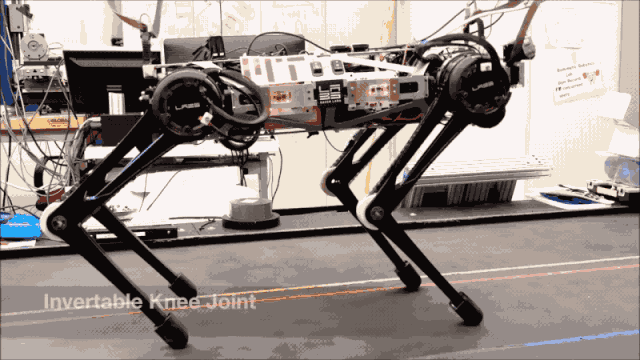
I just don't like to take pictures quietly
The Cheetah robot has performed amazingly since the first generation: it can autonomously cross obstacles and achieve a high-speed running of 30 miles (about 48 kilometers) per hour (see the video at the end of the article for details).
Due to the use of legs instead of wheels, Cheetah 3 can better walk on rugged terrain, its stability is very reliable, and can even rely on three legs to maintain balance.

Three feet can keep balance
In this upgrade, it was deliberately designed to accomplish all these tasks without relying on cameras or any external sensors. It can flexibly "feel" the surrounding environment, which engineers call "blind locomotion", just like a person can walk through a darkened room.
"Robots should be able to handle all kinds of unexpected behaviors without relying too much on vision." said Sangbae Kim, a designer of Cheetah 3 and associate professor of mechanical engineering at MIT. "The vision may be noisy and may be somewhat inaccurate, sometimes even completely. Not available. If you rely too much on vision, the robot must be very precise in positioning, resulting in slow action. Therefore, we hope that the robot will rely more on tactile information. In this way, it can move fast while dealing with unexpected obstacles.
Researchers will demonstrate the visionless capabilities of this robot at the International Conference on Intelligent Robots in Madrid in October. In addition to moving without vision, the team will also show the upgraded hardware of the robot, including a wider range of motion compared to the previous generation of Cheetah 2, and allowing the robot to stretch back and forth, twisting from side to side, just like Like a cat about to pounce on its prey.
In the next few years, Kim wants this robot to perform tasks that are too dangerous for humans to perform or inaccessible to humans.
"Cheetah 3 is designed to perform a variety of tasks, such as power station inspections. These tasks involve a variety of terrain conditions, including stairs, curbs, and ground full of obstacles." Kim said: "I think there are a lot of them. Occasionally, we will want robots to replace humans to complete simple tasks. "By remotely controlling robots, dangerous, dirty and difficult tasks can be done more safely.
Contact detection algorithm: no need for vision, leap to the table, smooth landing
Cheetah 3 can climb stairs without visually, cross rugged terrain, and quickly restore balance when encountering unexpected external forces. This is due to two new algorithms developed by the Kim team: contact detection algorithm (contact detection algorithm). detection algorithm) and model-predictive control algorithm.
The contact detection algorithm helps the robot determine the best moment for a leg to switch from swinging in the air to stepping on the ground. For example, if the robot steps on a thin branch, instead of stepping on a hard and heavy rock, how it will react—whether to continue walking past, or to flex its legs backward—can decide Whether it can maintain balance.
"When it comes to switching from the air to the ground, the switching action must be done very well," Kim said: "The real meaning of this algorithm is to determine'when is the safe time to settle?'"
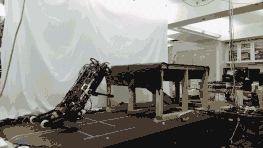
Fly onto the table, nearly 1 meter high in the air, and land smoothly
The contact detection algorithm helps the robot determine the best time point to switch between the swinging and stepping of the legs. It has to continuously calculate three possibilities for each leg: the probability of the leg contacting the ground, the leg hitting the ground and generating force Probability, and the probability of the leg swinging in the middle. The algorithm calculates these probabilities based on data from gyroscopes, accelerometers, and leg joint positions, which record the angle and height of the legs relative to the ground.
For example, if a robot accidentally steps on a piece of wood, its body will suddenly tilt, thereby changing the angle and height of the robot relative to the ground. These data will be immediately used to calculate the above three probabilities for each leg, and the algorithm will combine to estimate whether each leg should be pressed down on the ground, or should be lifted and separated to maintain balance-all of these are in the robot without vision Under the circumstances.
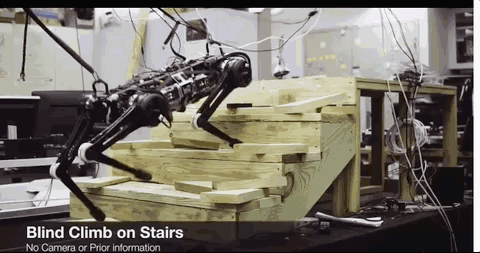
Do not rely on vision to climb stairs, rely solely on algorithms to maintain balance
"If humans close their eyes and take a step forward, we will have a mental model of where the ground may be, and we can prepare for it. But we also rely on the feeling of touching the ground." Kim said: "To cheetahs 3 The robot we do is a similar thing, combining multiple (source) information to determine when to switch."
Researchers tested the algorithm in experiments: let Cheetah 3 trot on a treadmill in the laboratory and climb stairs. Objects such as wooden blocks and tape rolls are scattered randomly on both surfaces.
"It doesn't know the height of each step, nor does it know there are obstacles on the stairs, but it just tries its best to move forward without losing its balance," Kim said. "Without this algorithm, the robot is very unstable. It's easy to fall off."
Model prediction algorithm: No matter how you kick or kick it, you won’t fall
The ability of Cheetah 3 to move without eyesight is partly attributed to the model predictive control algorithm, which can predict how much force a leg should exert after a step is taken.
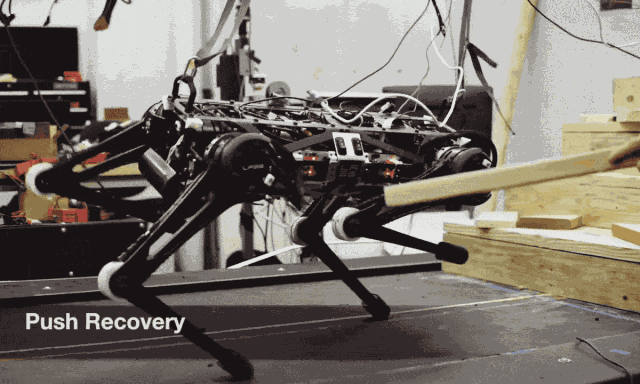
Cheetah 3's excellent balance, just can’t be pushed down
"The contact detection algorithm will tell you,'Now is the time to apply force on the ground,'" Kim said. "But once you touch the ground, you need to immediately calculate how much force you need to apply so you can do it in the right way. Move your body."
When any leg touches the ground and applies a certain amount of force, the model predictive control algorithm will immediately calculate where the robot's body and legs should be in the next half second.
Kim said: "For example, when someone kicks the robot's foot from the side, when the foot has touched the ground, the algorithm decides,'How do I determine the force that the foot will exert? Because there is an unwanted speed on the left, so I have to apply a force in the opposite direction to destroy that speed. If I apply a force of 100 Newtons in the opposite direction, what will happen in half a second?'"
The algorithm is designed to perform a calculation for each leg every 50 milliseconds (or 20 calculations per second). In the experiment, the researchers kicked and pulled hard while the robot trot on the treadmill, and yanked it with a belt as it climbed up a staircase full of obstacles. They found that the model prediction algorithm enables the robot to quickly generate a reaction force to restore balance and move on without falling in the opposite direction.
Kim said: "Thanks to this predictive control, the robot can apply the correct force on the ground, coupled with the contact detection algorithm, every contact is very fast and safe."
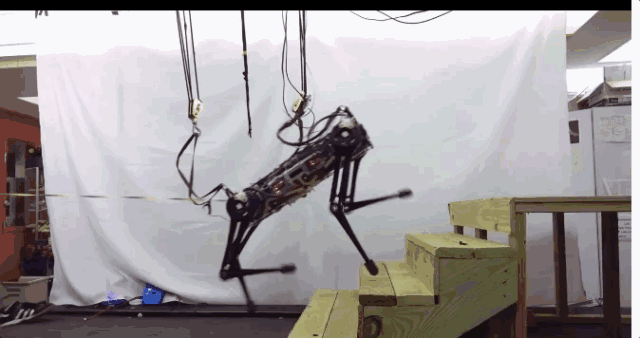
Can't pull it
The team has added a camera to the robot to provide the robot with visual feedback of the surrounding environment. This will help the robot draw a map of the large environment and enable the robot to visually detect when facing larger obstacles such as doors and walls. But at present, the research team is working to further improve the robot's non-visual mobility.
"We want to make a good controller that doesn't require vision," Kim said. "When we add visual capabilities to it, even if the feedback may be wrong information, the legs should be able to handle (obstacles). What should I do if I step on something that the camera cannot see? How does it act? This is the function of blind movement. We don't want to trust our vision too much."
This research was partially supported by Naver, Toyota Research Institute, Foxconn, and Air Force Scientific Research Office.
Finally, take a look at MIT's first-generation cheetah robot. At that time it was bigger, but it was equally good at running speed and over obstacles.
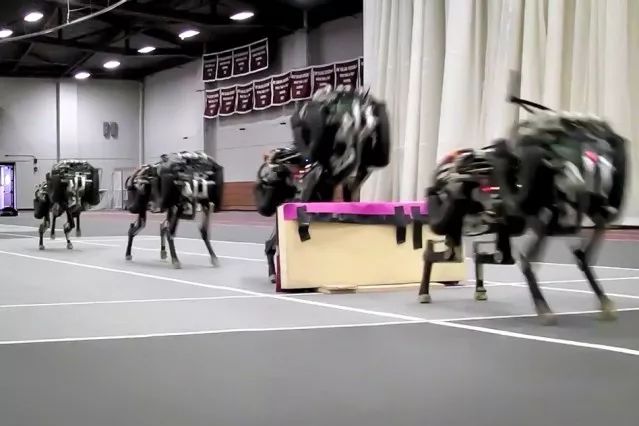
MIT's first-generation cheetah robot easily crosses obstacles
Nowadays, the function and appearance of mobile phones are similar, but the charging interface is not unified. The Android camp has Micro USB and Type-C ports, while the iPhone camp has Lightning. Different charging ports use different charging cables, which is very unfriendly for users who often need to use multiple phones. To solve this awkward situation, the three-in-one data cable was born. What is the three-in-one data cable? Three-in-one data cable means that one data cable includes Micro Usb Cable, USB Cable For Iphone and Usb Cable Type C. So one data cable can be used by all mobile phones.
Three-in-one data line is also known as multifunctional data cable. In the original data cable, the combination scheme is added, and the combination PCB is configured, which can support a variety of equipment and avoid the trouble of frequently looking for data line. It combines Lightning, a 30-pin port, and a Micro USB port, and is compatible with multiple devices. It can connect to any smartphone or tablet, including iPhone, iPad, Samsung, etc.
From the technical point of view, the three-in-one data cable does have a strong advantage. With continuous development and improvement, three in one data cable products in the original data cable appearance with woven cloth, will also add a light color on the three in one data cable, so that the data cable function is stronger and more exquisite, more and more people accept and buy. In the era of big data,the 3 In 1 Usb Cable can be said to have deeply affected our work and life. We believe that with the technical development of 3-in-1 mobile phone data cable, it will bring us more convenient transmission experience.
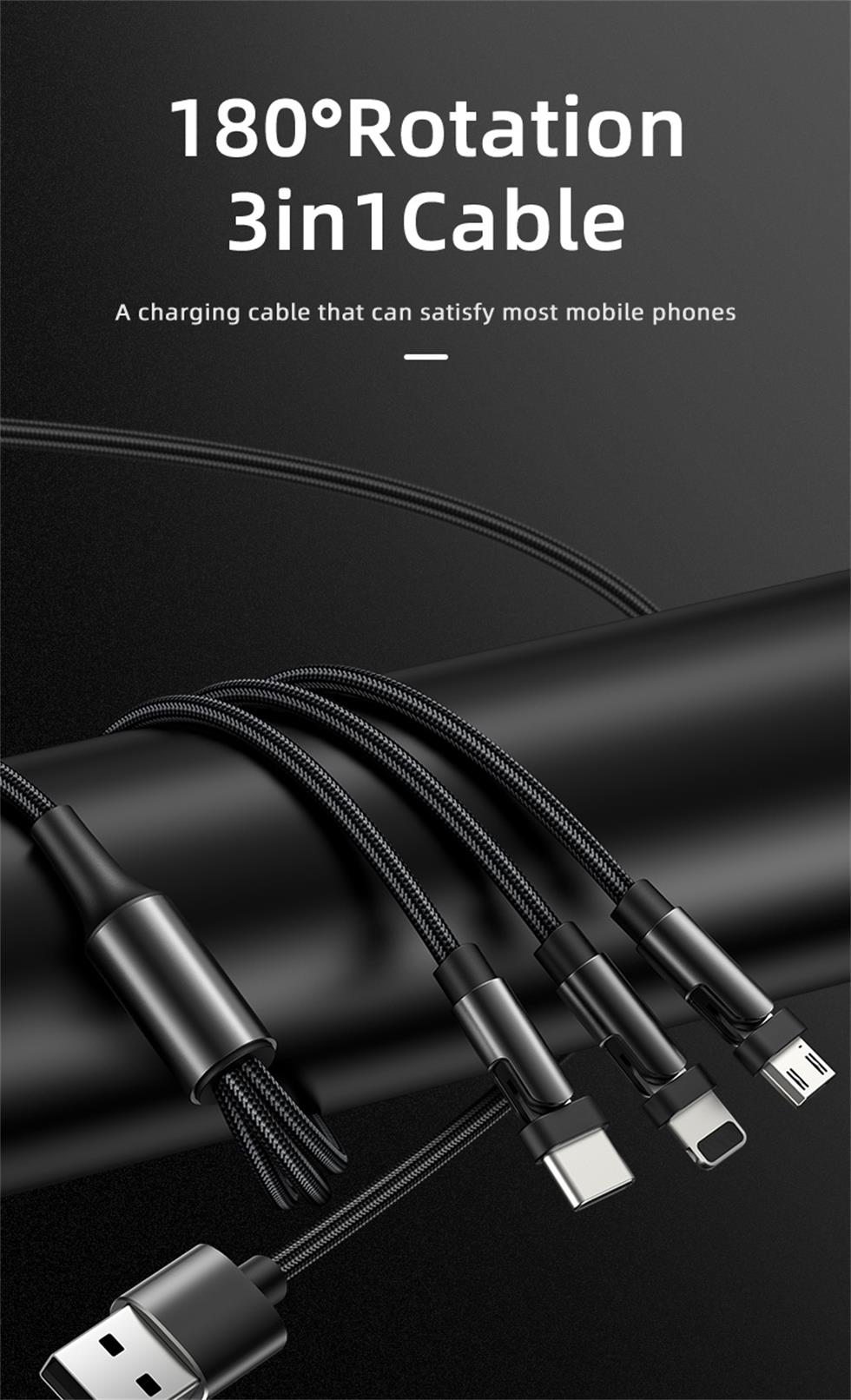
3 In 1 Usb Cable,3 In 1 Data Cable,3 In 1 Usb C Cable,3 In 1 Universal Cable
Henan Yijiao Trading Co., Ltd , https://www.yjusbhubs.com